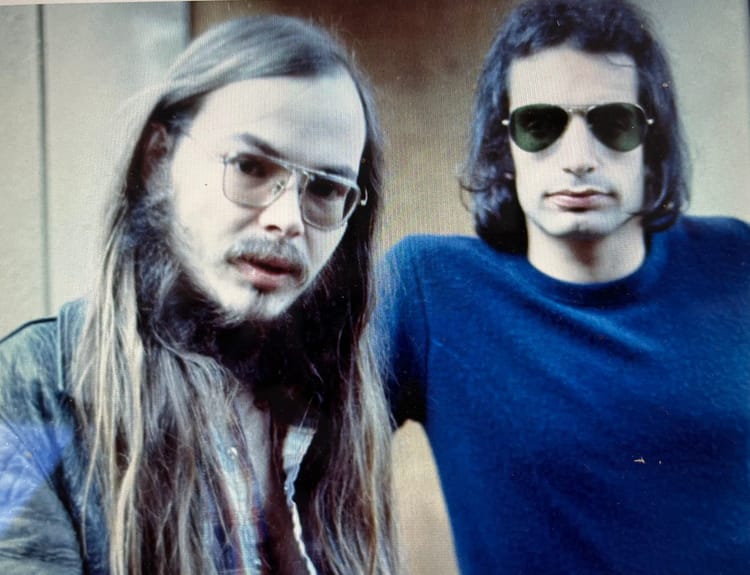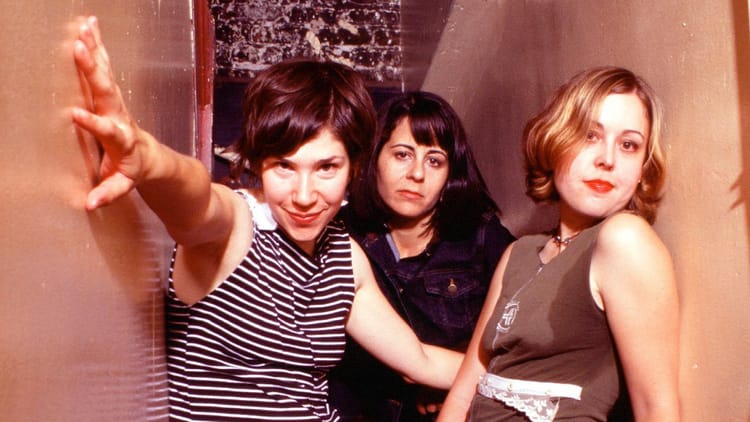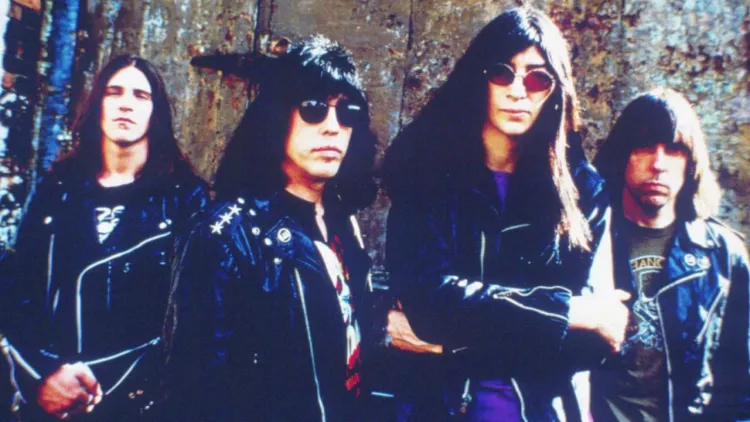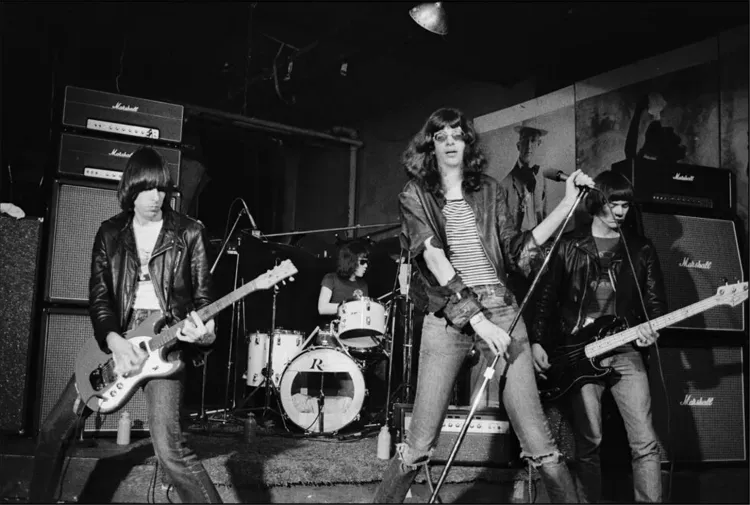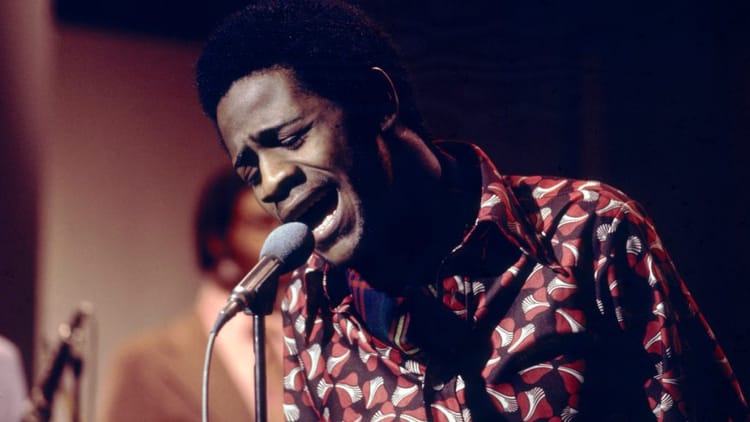Pixies, pt. 1: Anthony's Album Guide
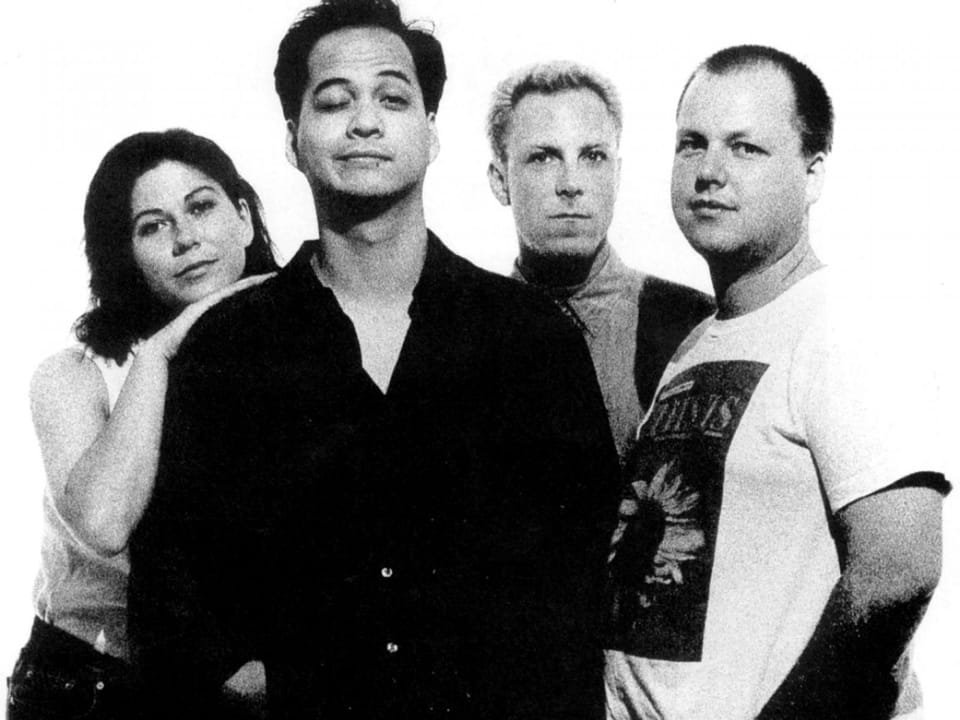
My handy dandy profoundly subjective numerical rating scheme is decoded here.
Come On Pilgrim EP (1987) 9
Surfer Rosa (1988) 9
Doolittle (1989) 9
Bossanova (1990) 8
Trompe Le Monde (1991) 9
Death To The Pixies (1997) 6
Pixies At The BBC (1998) 6
Complete ‘B’-Sides (2001) 6
Pixies EP (2002) 6
Wave Of Mutilation: Best Of Pixies (2004) 6
In one of the many ironies befitting a group that foretold so much of ‘90s rock culture, Pixies were a lightweight college party combo from Boston that’s almost impossible to think are fine. For most with any interest in the rock once or currently considered “alternative,” they’re either one the greatest bands to ever exist, or an actively annoying gnat, if not tick, if not leech, that won’t leave culture’s hide despite their transparent negligibility. As you can guess from the numbers above, I lean towards the former take. But I sympathize with the haters. As proven by the ever-growing hordes of kids that keep the reunited band and its legacy afloat, it’s not that “you had to be there.” In most cases, you had to not be there yet when you first heard them. “There” being any kind of genuine demimonde. Pixies was a band that refused to take being edgy seriously, and you can’t blame the edgy for reciprocating.
“I wanna be a singer like Lou Reed,” said Black Francis on the band’s first EP. But where Reed was a music and poetry nerd given electro-shock for antisocial and homosexual tendencies as a teenager, Francis (born Charles Thompson IV) was a music & poetry nerd who shared these ambitions in his senior yearbook: “become published poet, writer and journalist; backpack from Mexican border to Canadian border; bike tour Europe; become accomplished Boston street musician; FOLLOW JESUS.” While he was a big Larry Norman fan who attended evangelical summer camps, he also celebrated the “nicotine cloud that surrounds Westport High” elsewhere in the yearbook and said his pet peeve was “dead puppies.” So was he kidding about Jesus? Based on his work with Pixies, Thompson’s response might have been a shrug.
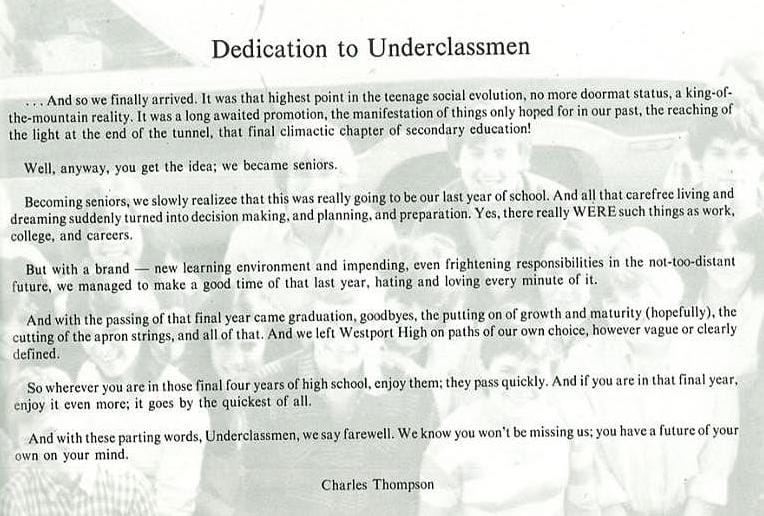
After two years of college (including a half-year in Puerto Rico), Thompson finally chose rock over anthropology, dropping out and demanding former roommate and fellow guitarist Joey Santiago start a band with him in Boston. Santiago had introduced Thompson to hipper tunes (kid didn’t even know The Cars), and their shared tastes led to an unusual ad for a bassist “into Husker Du & Peter, Paul And Mary. Please - no chops.” The only person on Earth who bothered to answer it was a med tech named Kim Deal, even though her twin sister Kelley in Ohio was the one with a bass. When Kelley refused to become their drummer (as she wasn’t really a drummer and lived in Ohio), Deal brought in an engineer friend of her husband’s named David Lovering, who at least used to play the drums.
So what the hell did these goofballs sound like? By the time they recorded a demo with enamored, aspiring studio head Gary Smith in 1987, they were kind of like the Cars, but with a woman singing back-up, no keyboard, a tendency to swing between surf strolls and punk blitzes, and a singer who liked to make dirty jokes, drop conversational Spanish, reference the bible and shriek like someone had thrown boiling water on him. You’ll be forgiven if you don’t hear The Cars through all that, but The Cars is where Charles Thompson got the idea of being incredibly hooky and arch at the same time, sort of looking cool but fooling nobody over the age of 25.
Four little Pixies in 1986.
A lot of the band’s early material was intended to impress Thompson’s goth girlfriend, and worked so well Pixies got a record deal with 4AD. Label prez Ivo Watts-Russell remixed his eight favorite tracks from the demo, releasing it as the Come On Pilgrim EP (Thompson now credited as “Black Francis” and Deal - at least through Surfer Rosa - as “Mrs. John Murphy”). While the band shared manager Ken Goes with Throwing Muses, another arty, shriek-prone Boston band that signed with 4AD a year earlier, Pixies came off both louder and less intense than their sister band, screaming “repent!” on “Caribou,” but only after repeatedly cooing the title. Francis hollers and raves in Spanish on “Vamos” and “Isla De Encanta”…about how great the beach is. “I’ve Been Tired” describes depraved erotic experience, but explicitly in the context of weirding out a bar pick-up. Watts-Russell knew what he was doing climaxing with “Levitate Me,” which would sound like Bauhaus trying to get that Adam Ant money if Francis didn’t bleat like a sheep on the killing floor. The remaining, less Ivo-impressing tracks from the demo were released as Pixies in 2002, including songs that would eventually be recorded for all four of their initial studio albums, and others that weren’t.
I’d love to say Pixies blithely went from subverting goth to subverting pigfuck by hiring Big Black’s Steve Albini to record their debut full-length, but apparently it was Watts-Russell’s idea, happening on a whim because Ken Goes wasn’t getting along with Gary Smith. It’s also a coincidence that Albini - then best known for spewing hate in front of a drum machine - was eager to prove how he felt a live band should be captured on tape. The result is a masterpiece of room sound, mammoth pounding and searing solos that had every post-punk guitar act in the ‘90s (as well as Jimmy Page & Robert Plant) aching for a similar mic set-up. The humble-when-not-scabrous Albini, embarrassed to have such sway in the studio, initially gave the band shit for being so pliable to his whims, which included the incorporation of studio banter, sudden drop-outs and other analog wizardry. But you can’t blame the band for being so easygoing when the result sounded so damn cool. After all, Francis just wanted to entertain the nice people with songs about broken faces, bloody dresses, bike-riding superheroes named Tony (hey!) and riding the Euphrates river in a tire. “Where Is My Mind?” has since soundtracked the finales of at least three ostensibly subversive movies about macho violence, but the big hit at first was “Gigantic,” Kim Deal’s tribute to Sissy Spacek’s character Babe having an affair with a black teenager in Crimes Of The Heart. It was the world’s first time hearing Deal’s bewitching midwestern purr, with a chorus so massive and euphoric the band would play it at the beginning and end of sets, Apple eventually hooking a major iPhone campaign around the song in 2014.
Did I cry the first time I saw this ad? None of your business.
Less than a year after Rosa’s release, the band was back in the studio with another producer of Watts-Russell’s choosing, Gil Norton, who’d worked with Throwing Muses and Echo & The Bunnymen. Once again, the guy behind the mixing desk had big ideas about how to make their goth bubblegum as dramatic and juicy as possible. Once again, the band said “sure!” For all the solid competition in the Pixies oeuvre, it’s tempting to say “Debaser” is their definitive anthem. Francis hits on a “girlie so groovy” by letting her know he’s into Luis Bunuel films, post-punk power chords building to a rapturous climax as Francis barks “Duh-BASE-er!” and Deal gently echoes it behind him. It’s the missing link between “Smells Like Teen Spirit” and “Sugar, Sugar,” suggesting subversion and perversity could be stylish window dressing for young love, and that’s okay. After all, Jim Morrison and the countless King Snakes in his wake had claimed esoteric art as inspiration for their macho decadence for twenty years. Maybe it was time to let nice kids & quirky cuddlebugs do the co-opting.
While Surfer Rosa was a touchstone for Nirvana’s In Utero (also recorded by Albini), Doolittle is a Nevermind thing, more about grabbing ears on the radio than capturing the sound of a room, making hay out of quiet verses and loud choruses (except for the closing “Gouge Away,” where the chorus is soft and the verse is loud!). The lyrics remain shamelessly, superficially dark, with “Monkey Gone To Heaven” reducing Nick Cave’s deepest thoughts about religion into a jaunty 2:57 jingle (complete with an ironic “rock me, Joe!”). The romantic kiss-off “Wave Of Mutilation” was bound to piss off anybody who’d actually thought hard about mutilation. Though the Lovering/Deal-sung surf showcase “La La Love You” and the darling country exercise “Here Comes Your Man” showed a band ready to leave any acknowledgement of the eyeliner set behind them, college kids ate it up in America. In the UK, where Echo & The Mary Chain et al had established “goth bubblegum” as a worthwhile commercial endeavor, the band went Top 10.
One way to stop being dark, but still be pretty weird.
With the success of “Gigantic” and Kim Deal’s rising status as a fan favorite, Pixies slammed right into the cliche issue of a sideperson feeling their oats just as their frontperson couldn’t have less time for it. Following a tempestuous tour promoting Doolittle, Deal hooked up with Tanya Donnelly of Throwing Muses (then suffering a similar second banana issue with head Muse Kristin Hersh) and began The Breeders, recording their adored debut Pod with Albini in Scotland. The other three Pixies moved to Los Angeles, Deal not committing to her return until right before the recording of Bossanova. Somehow, all this drama (and recording!) happened inside of a year.
With the Boston songbook mostly depleted, and little time taken to regroup, Bossanova is both their thinnest album and the world’s first look at the mature Black Francis, confident in his interests and no longer trying to impress that hot goth. A surf instrumental and a metal joke precede “Velouria,” Francis’ most romantic vision and trippiest chord progression, a theremin-touched tale of lost love and alien folklore that resembles Brian Wilson working with David Liebe Hart instead of Van Dyke Parks. More songs about UFOs and girls follow, a delight for those who liked the band’s hooksense but never cared for their transgressive bent. But only “Dig For Fire” and “The Happening” suggest they’ve actually outgrown the old blitz-and-shriek, rather than just tired of it. And every unmentioned track that checks in over three minutes shouldn’t have.
One way to get video watchers to focus on the music...or your jeans.
Though Deal accepted Pixies wasn’t her creative outlet, Francis deeply resented how many people wanted it to be. Her voice is barely heard on Trompe Le Monde, the band’s fourth album in four years, recorded in blurts during the promotion of Bossanova. Though just as much a rush job as Bossanova, featuring a cover of a year-old Jesus & Mary Chain song, a number about “U-Mass” dating back to U-Mass, and a four-minute tribute to the percussion hired to pad out the song (meta!), it’s a considerably more thrilling ride. The band reclaims that blitz-and-shriek energy from an older, but no less exuberant, perspective, singing about Area 51 and architectural ambition instead of incest (though “Subbacultcha,” another Boston-era bash, gives it up for a girl “looking like an erotic vulture”). Joey Santiago questioned in hindsight how much shredding there is on it, but if your favorite Velvet Underground album is White Light/White Heat, you know “the album where the guitarist can’t remember why he was shredding so much” will be a career highlight. The one about the percussionist aside (though it’s somewhat redeemed by “now I’m going to sing/the Perry Mason theme/*Black Francis sings Perry Mason theme*”), only “Motorway To Roswell” braves a fourth minute, and it’s for the most heavenly of codas. I’ve wavered back and forth on whether Trompe is merely underrated or even better than Surfer Rosa, but I’m currently bullish on a ninety second song celebrating mystic sea monkeys, leading to one about violence being a bummer - rather than a kick - when missing your lover.
Trompe didn’t build on their established UK chart and US college radio success, and any hope that the success of Nirvana would inspire them to carry on was shattered by a depressing tour opening for U2 in the summer of 1992. Black Francis became Frank Black for a solo album featuring Joey Santiago and videos by They Might Be Giants’ John Flansburgh, which did well enough that he decided he didn’t need to see Lovering or Deal again anytime soon. Though Tanya Donnelly left the Breeders when it became clear she’d be a second banana again, Kim’s sister Kelley was now in the line-up, and a joyous MTV hit called “Cannonball” made them bigger than the Pixies ever were. Frank Black, kinkily square and refusing to embrace a sonic template turned commercial by time and fashion, never had a similar cultural breakthrough. Nonetheless, it still took an impressively prolific decade for him to decide the concert guarantees were worth being Black Francis (and Kim Deal’s onstage work-husband) again. The acclaim that followed their unpredicted return to the road has since launched countless vans and buses containing aging hipsters whose music was newly found by the youth online. In a sense, Thompson’s still adressing the underclassmen.
Pixies left as they came...having a very odd relationship with dark, British cool.
While those initial four albums in four years are almost up there with the Velvet Underground’s in my book, Lou Reed and company had them licked when it came to outtakes. Those early counter-counter-culture heroes left quirky classic bubblegum in the vault, unheard for decades. But do you think Pixies would have been celebrating a tabla player for five minutes on Trompe if there’d been more quirky classic bubblegum available? Complete B-Sides features the slow version of “Wave Of Mutilation” from Pump Up The Volume, two Neil Young covers, Lovering dreaming of Debbie Gibson (Francis wrote it), one song you’d have put on Doolittle or Bossanova if you’d had your way, and bunch you wouldn’t have. It’s both the most worthwhile and inconsistent of their archival releases by default, artlessly slapped together but not completely redundant, unlike the album track compilations and live releases.
I’m labeling this post part 1 out of respect for Francis, Santiago and Lovering recording another four albums since 2014, Deal departing as she had no interest in being Francis’ in-studio work-wife. There’s no reason the average song length has gone up other than age, but there’s decent stuff there, and I’m not offended that they’ve moved forward. Still, I’ll be digging deep through the Breeders and the Frank Black discographies, celebrating long-loved winners like Title TK and Teenager Of The Year, before reconsidering and writing about Indie Cindy or Doggerel.
The Pixies back at it in 2004, before everyone was.
Doolittle is at is at 77 on My Top 300 Favorite Albums of All Time, with Surfer Rosa at 174. Had I revisited Trompe a little earlier, it would have been right on Doolittle's tail. I'm telling you this because I've found people are more inclined to discuss and share reviews if there's a quantitative element at the top or bottom they can easily debate. Prove me right! Direct correspondence can be zipped off to anthonyisright at gmail dot com.
